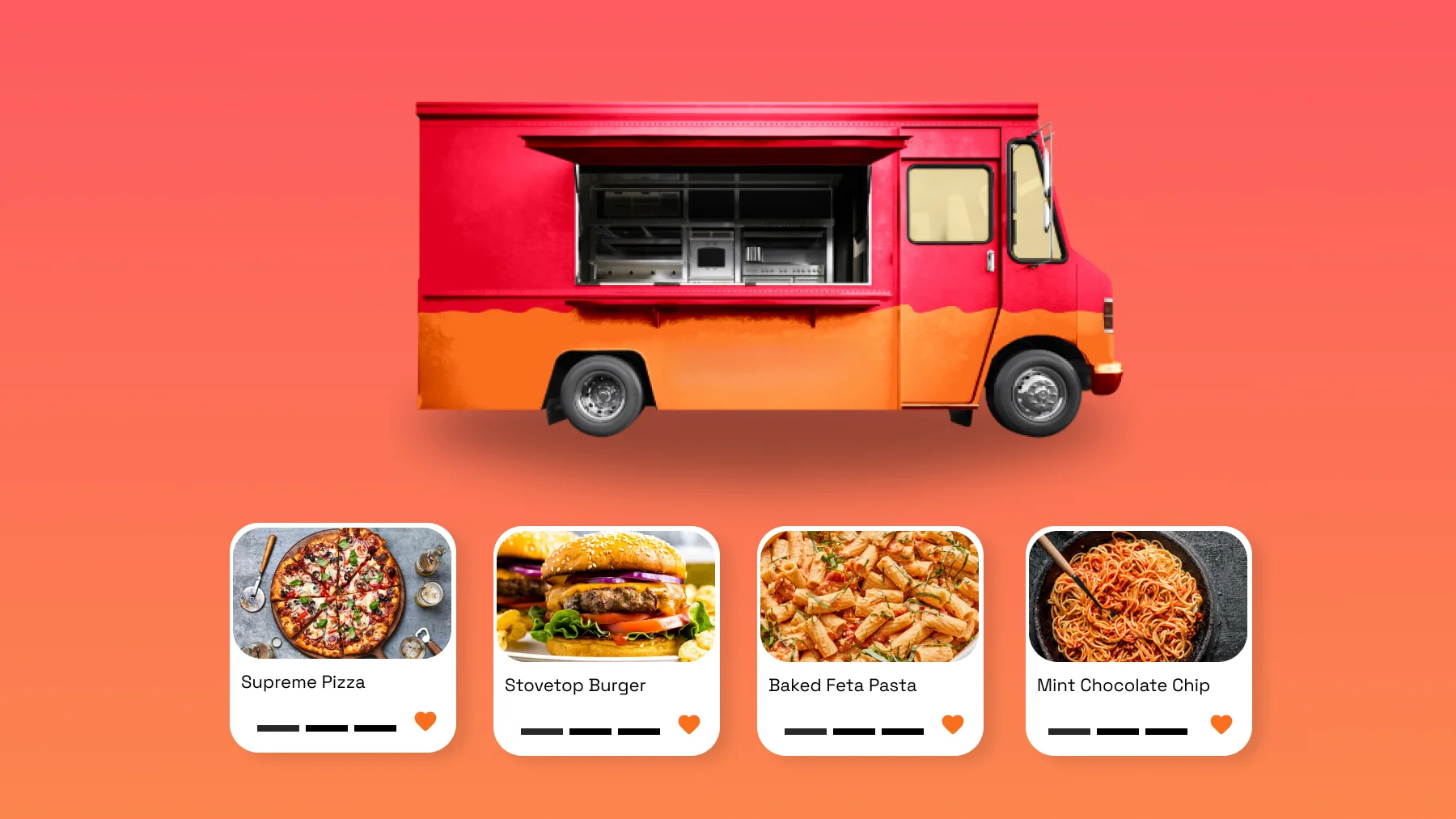How To Create A Reliable Restaurant Marketing Plan
If you wish to open and run a new restaurant successfully, start with proper planning. This is when you must know how to draft a precise restaurant marketing plan.
What Is a Restaurant Marketing Plan?
A restaurant marketing plan is an exhaustive report that describes how a restaurant plans to execute its marketing strategy for achieving business goals.
A restaurant marketing plan is a detailed, written document that is created even before a restaurant begins its public operations. Of course, if a restaurant does not have one despite starting business already, it is never too late to benefit from the features of a comprehensive restaurant marketing plan – the topic of today’s discussion.
A restaurant uses its marketing plan as a blueprint that states how it is going to persuade customers to visit it. When this blueprint is digitized and brand propagation activities done online, it becomes a digital marketing plan.
Why Is a Restaurant Marketing Plan Absolutely Necessary?
With a well- thought of and precisely drafted restaurant marketing plan, the restaurant business will be known well, recalled in an instant, loved by customers and also propagated by them. Isn’t that awesome?
A restaurant marketing plan might seem to initially alarm you and discourage you from engaging in the task. But, with our guide, you can make it manageable and also exemplary for other new restaurants to draw inspiration from.
A restaurant marketing plan is significant because it helps a restaurant to not only visualize the goals, forecast setbacks and optimize the best features, but also draft it as a statement for constant reference. With a marketing plan in place, the status of progress can be regularly checked. Digressions from the original tasks can be quickly identified and the course of action altered accordingly.
Marketing is a great equalizer for a restaurant business. When the modus operandi is planned well-ahead and properly executed, the results that marketing can generate is profound. With a robust restaurant marketing plan, even a small restaurant gets to play with the predominant brands in the restaurant domain.
A reliable restaurant marketing plan is more than just enticing images on Instagram. That also does not mean a restaurant must spend loads of money on marketing simply to make an impact. Even for restaurants who can afford only small budgets, there are innumerable marketing channel options available. All that a restaurant marketing plan requires is a clear vision rather than money.
Goals and Objectives of a Restaurant Marketing Plan:
A restaurant marketing plan is intended to spell out the revenue and other goals that need to be achieved through marketing efforts over the next 12 months, or even beyond. It clearly outlines the specifics on how a restaurant owner intends to achieve them.
A restaurant marketing plan has the following four objectives:
Lead Generation – It helps a restaurant find prospective investors and other people willing to be a part of the restaurant business.
Brand Awareness – Imparting knowledge about the restaurant and its offerings to the stakeholders involved.
Brand Consideration – Convincing the prospects that your brand is more likely to be successful even though the restaurant industry is highly competitive.
Sales – Convincing stakeholders to invest money in the business and also buy from you.
A marketing plan includes concrete goals, set out as numerical figures, along with the timeline necessary to accomplish them. These numbers can be used as a constant reference to gauge the restaurant’s progress in terms of revenue and brand popularity.
How to Go About Creating a Restaurant Marketing Plan
By asking yourself certain questions about where your customers are and how to reach them, creating the restaurant marketing plan becomes easier. For example:
- What is the age group of a large proportion of your customers and other data about customer demographics?
- Where do they spend time while staying online?
- Which is the best social media platform to reach them?
Once these questions are answered, it is time to decide how much money can be allocated for and spent on marketing activities. Regular testing of these marketing channels is essential to identify which one is working in favor of the business and the brand and redesign certain ideas based on results. While the possibility of trial and error always exists, the payoff is undoubtedly immense.
STEP 1 - Executive Summary
This includes a brief or summary of the entire restaurant marketing plan. It must always include a ‘Main Goals’ section stating the short and long-term goals of the restaurant. It must also contain a ‘Recommendation for the management’ section containing major points of the business that stakeholders can easily understand if they read it.
STEP 2 - Current Marketing Situation
Mention details of the target audience and market and the restaurant’s position in the same. This section should be exhaustive with an overview of the market’s needs and the specific needs of the customers in the market, the competition that exists in the market, information about similar existing products, ways adopted by the competitors to generate sales, price strategies of competitors and their profit margin, distribution requirements for the restaurant’s offerings, etc.
STEP 3 - Swot & Four P’s Analyses
These two methods are foolproof for businesses of varying nature and size. SWOT refers to – Strengths, Weaknesses, Opportunities and Threats. While the first two are internally influencing factors, the next two are factors affected by external elements.
The Four P’s are Price, Product, Promotion and Place. It is pretty much like the when, where, what, why and how of marketing a product or service. Working out strategies based on this model will help in developing the initial image and other key strategic elements of the brand.
STEP 4 - Objectives & Issues
This section of the restaurant marketing plan must state the quarterly, annual and also five-yearly goals of the restaurant. Following the SMART goal setting method will help achieve Specific, Measurable, Attainable, Realistic and Time-bound business growth goals.
STEP 5 - Marketing Strategy
Explain details about the marketing strategy that you intend to use to achieve the objectives stated in STEP 4. Also list the possible hindrances or threats that may arise in your journey towards realizing the objectives.
A marketing strategy must always explain four key points to anyone reading it. They are:
- How have you planned to engage customers with your restaurant brand?
- How will you create and offer value to customers?
- How will you be unique in the competitive restaurant industry?
- How have you planned to build and foster customer relationships?
Apart from these four points, a marketing strategy should also contain details about audience segmentation, audience targeting and positioning. By including details of the budget, keeping a close eye on the marketing expenditure and tracking results will become easy.
Finally, a marketing strategy section of the restaurant marketing plan should explain the nature of strategies that will be followed for every element of the marketing mix (product, price, promotion, place).
STEP 6 - Action Plan
In this section, you will be describing the way adopted for turning marketing strategies into actionable tasks. Details of the implementation techniques are as important as the marketing strategy itself.
The four major areas of the action plan are:
- What are those actionable tasks going to be?
- When will the team or the person-in-charge start executing the task?
- How much money will they be allowed to spend for the achievement of these actionable tasks?
STEP 7 - Budget
This section must include details about revenues, cost of production, distribution costs and money required for the execution of the marketing strategy. Once the budget allocation is done, the digital marketing elements can be chosen accordingly.
STEP 8 - Measuring Results
This section covers details about the ways that you will adopt to measure the results and ROI on a restaurant’s marketing activities. You will also include details of a Plan-B that would take immediate effect if the current restaurant marketing plans are not reaping the desired results.
Prerequisite for a Restaurant Marketing Plan - a Perfect Website
For the restaurant to have its own exclusive space for marketing, it must have a well designed website. Apart from its social media pages, a restaurant website is a powerful marketing tool. It is a medium for people to know about the business in detail and also make instant food orders. Choosing a customizable restaurant website and app builder is essential to create a restaurant website that reflects beauty and utility.
92% of diners read online reviews before choosing a restaurant.
77% of people trust online peer reviews more than food critic reviews.
33% of people will abstain from visiting a restaurant if a bad online impression is created.
Thus, to remain competitive, digitization of the restaurant marketing plan becomes highly essential.
Other Key Elements for a Successful Restaurant Marketing Plan
Search Engine Optimization:
Statistics state that 93% of online interactions are initiated due to search engines and effective SEO. It is, therefore, essential to boost SEO by creating a blog section on the restaurant website and updating it with engaging content.
Usage of keywords and other SEO best practices will drive organic traffic to the restaurant website. Creating a Google My Business account with a clear mention of the address and contact information is required for customers to easily locate the restaurant (both online and offline).
Social Media Marketing:
Social media offers a restaurant effective networking opportunities and building long-term relationships with existing and new customers. Restaurants can create foot traffic by hosting competitions, offering free or discounted meals and gift vouchers for winners. Competitions can also be based on hashtags, social media posts, likes, shares and comments.
Influencer Marketing:
This type of marketing is gaining huge popularity. By adopting this method, you achieve greater reach with increased credibility. The influencer chosen by you gains the status of an opinion leader who encourages his followers to visit your restaurant.
Email Marketing:
One effective way to get more email subscribers is to offer discounts to ones who are already a part of the email recipient list. This will motivate them to make their subsequent visits to the restaurant and also spread positive word of mouth.
CONCLUSION
Creating a restaurant marketing plan is a simple, yet crucial step for the business to prosper. It comes as a savior when the restaurant suddenly does not do well as expected. By diligently following the 8 steps mentioned by us for creating the restaurant marketing plan, you can create a reliable blueprint for guiding you in your entrepreneurial journey.
If building a profitable restaurant website is something you wish to do in the near future, Let us know.
LATEST BLOG POST
What Is Happy Hour? 10 Foolproof Ways to Make Your Happy Hour Successful
ShareTweetSharePin0 Shares
What does a hostess do at a restaurant? Duties And Responsibilities
ShareTweetSharePin0 Shares
200 + Cafe Name Ideas That Will Make Your Business Stand Out
ShareTweetSharePin0 Shares
How to Craft an Effective Restaurant Mission Statement: A Step-by-Step Guide
ShareTweetSharePin11 Shares
How to Create Food Truck Business Plan? Complete Guide
ShareTweetSharePin11 Shares
How to Choose the Right Restaurant Name (+ 190 Great Ideas & Examples)
ShareTweetSharePin11 Shares








